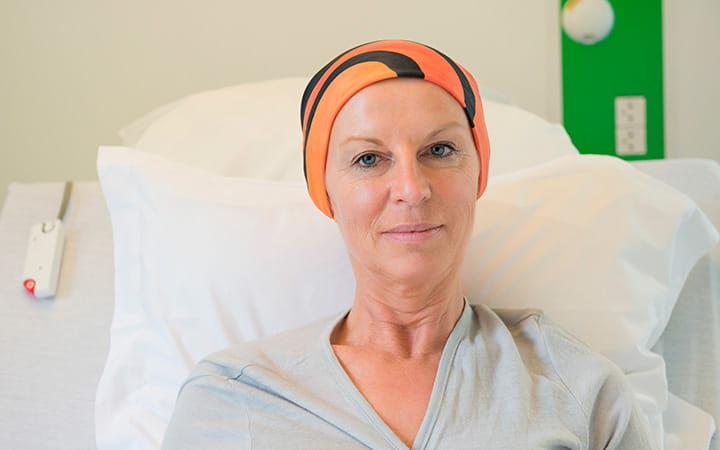How Scalp Cooling Can Help Lessen Hair Loss During Chemotherapy
September 29, 2021

Perhaps one of the most difficult aspects of undergoing chemotherapy treatment, especially for women, is hair loss from the scalp.
Some chemotherapy drugs are more likely to cause hair loss, and, depending on the dose, hair loss can range from thinning or complete baldness.
One option can help some cancer patients reduce the amount of hair they lose through chemotherapy treatment: scalp-cooling therapy.
In addition, by helping to reduce hair loss, the therapy can help protect the privacy of cancer patients who are undergoing chemotherapy treatment by eliminating the need to wear a wig, scarf or cap.
What is Scalp Cooling?
Scalp cooling is a process that can help lessen hair loss caused by certain chemotherapy drugs. It uses a specially fitted cap that you wear before, during and after chemo. The cap is hooked up to a machine that keeps it cold.
Scalp cooling can help you retain your hair, but it cannot save every strand. You may still have thinning, shedding or patchy hair loss.
Patients receiving chemotherapy for most solid tumor cancers, such as breast or ovarian cancer, can use scalp cooling. The therapy is not approved for patients with blood cancers, such as leukemia or lymphoma.
Research on Scalp Cooling Therapy
Scalp-cooling therapy has been studied in more than 30 clinical trials since the 1970s that examined its safety and effectiveness. Since 2015, the U.S. Food and Drug Administration (FDA) has approved two different scalp-cooling therapy systems for chemotherapy-induced hair loss: DigniCap and Paxman.
The overall reported success rate of scalp-cooling therapies is 50 percent to 80 percent, meaning that a patient has less than 50 percent hair loss – enough remaining hair so the patient does not need to use a wig or hair covering. Results also vary depending on the chemotherapy type and dose.
Over the last few years, scalp cooling therapy has become more available at cancer centers. If you would like to use scalp cooling, talk with your cancer doctor. He or she can tell you if the therapy might be an option and discuss possible side effects with you.
Related Links
At UH Seidman Cancer Center, we are leading the way in the diagnosis and treatment of cancer with state-of-the-art technology that allows our expert care teams to detect tumors earlier, target cancer cells more precisely, and perform complex procedures using minimally invasive techniques. Learn more about cancer services at UH Seidman Cancer Center.


